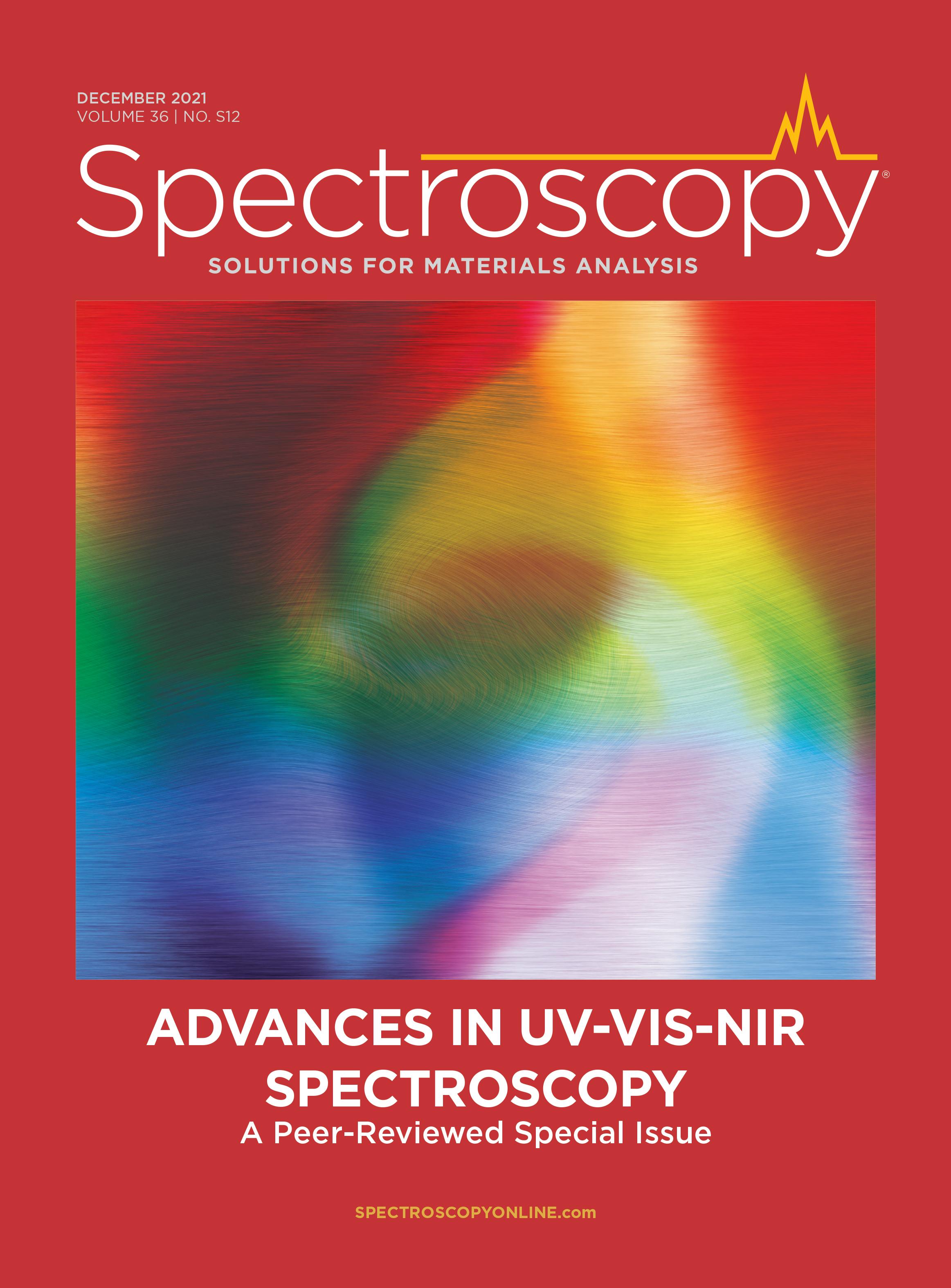Advances in UV-Vis-NIR Spectroscopy: A Peer-Reviewed Special Issue
We present this special issue of Spectroscopy on ultraviolet (UV), visible (vis), and near-infrared (NIR) spectroscopy. This special issue features five specially selected and peer-reviewed papers that highlight exciting and important new developments in the potential of laboratory and remote sensing, combined with chemometric methods, to the application of UV-vis-NIR spectral data. Combining UV-vis-NIR spectra data and chemometrics provides a set of powerful analytical tools capable of discriminant analysis, classification, identification, and quantitative analysis for a variety of important applications. The UV-vis-NIR spectral regions reveal the details of electronic and molecular information for solid, liquid, and gas phases for natural and synthetic materials. The advantages of these spectral regions often include little or no sample preparation, capabilities for remote sensing, and rapid data acquisition and analysis. When multipurpose machine learning and other chemometric approaches are used for data analysis, the results can be surprising and dramatic. Many of these papers often include detailed chemometric terms and equations and we hope you will enjoy exploring these data analysis methods for your own use. The selected papers for this digital issue of Spectroscopy include the specific aspects of spectral data collection, data preprocessing, and chemometric model development.
Our first paper demonstrates classification and identification of different wood species using a portable near-infrared spectrometer, combined with four spectral pretreatment methods and three pattern recognition methods. Additional chemometric tools are used for comprehensive evaluation of classification model accuracy and complexity.
In the second paper, an effective NIR spectroscopy method is described, using a series of machine learning approaches for wavelength variable selection, to rapidly discriminate grape seed oil adulteration. Grape seed oil has shown beneficial effects for consumers as a dietary supplement, and there is now an interest in measuring grape seed oil for oil quality and potential.
In our third selected paper, a vis-NIR spectral reflectance method is proposed that measures leaf chlorophyll using a wavelet analysis algorithm approach. Here, spectral reflectance is shown as a non-destructive method that is applicable to remote sensing for chlorophyll content in a crop. Measured chlorophyll content is a recognized indicator for photosynthetic capacity, growth cycles, and degrees of stress on plant ecosystems.
Our fourth paper proposes a vis-NIR remote sensing method to determine copper content in mining areas as well as inferred measurement of the environmental impact of surface mining methods. This analytical method is important due to depletion of modern mineral resources from continuous exploitation and utilization, making it economically necessary to quickly identify and locate sources of low-grade copper ore.
In the final paper of this edition, a highly accurate and optimized UV spectroscopy method is proposed to simultaneously monitor nitrate and nitrite for rapid determination and continuous monitoring in environmental water applications. Recent regulations have been imposed to set legal limits of nitrate and nitrite in water worldwide, making accurate measurements of these analytes an important water quality analysis requirement.
Jerome Workman, Jr. is the senior technical editor of LCGC North America and Spectroscopy. Direct correspondence to: jworkman@mjhlifesciences.com


NIR Spectroscopy Explored as Sustainable Approach to Detecting Bovine Mastitis
April 23rd 2025A new study published in Applied Food Research demonstrates that near-infrared spectroscopy (NIRS) can effectively detect subclinical bovine mastitis in milk, offering a fast, non-invasive method to guide targeted antibiotic treatment and support sustainable dairy practices.
New AI Strategy for Mycotoxin Detection in Cereal Grains
April 21st 2025Researchers from Jiangsu University and Zhejiang University of Water Resources and Electric Power have developed a transfer learning approach that significantly enhances the accuracy and adaptability of NIR spectroscopy models for detecting mycotoxins in cereals.
Karl Norris: A Pioneer in Optical Measurements and Near-Infrared Spectroscopy, Part II
April 21st 2025In this two-part "Icons of Spectroscopy" column, executive editor Jerome Workman Jr. details how Karl H. Norris has impacted the analysis of food, agricultural products, and pharmaceuticals over six decades. His pioneering work in optical analysis methods including his development and refinement of near-infrared spectroscopy, has transformed analysis technology. In this Part II article of a two-part series, we summarize Norris’ foundational publications in NIR, his patents, achievements, and legacy.
New Study Reveals Insights into Phenol’s Behavior in Ice
April 16th 2025A new study published in Spectrochimica Acta Part A by Dominik Heger and colleagues at Masaryk University reveals that phenol's photophysical properties change significantly when frozen, potentially enabling its breakdown by sunlight in icy environments.